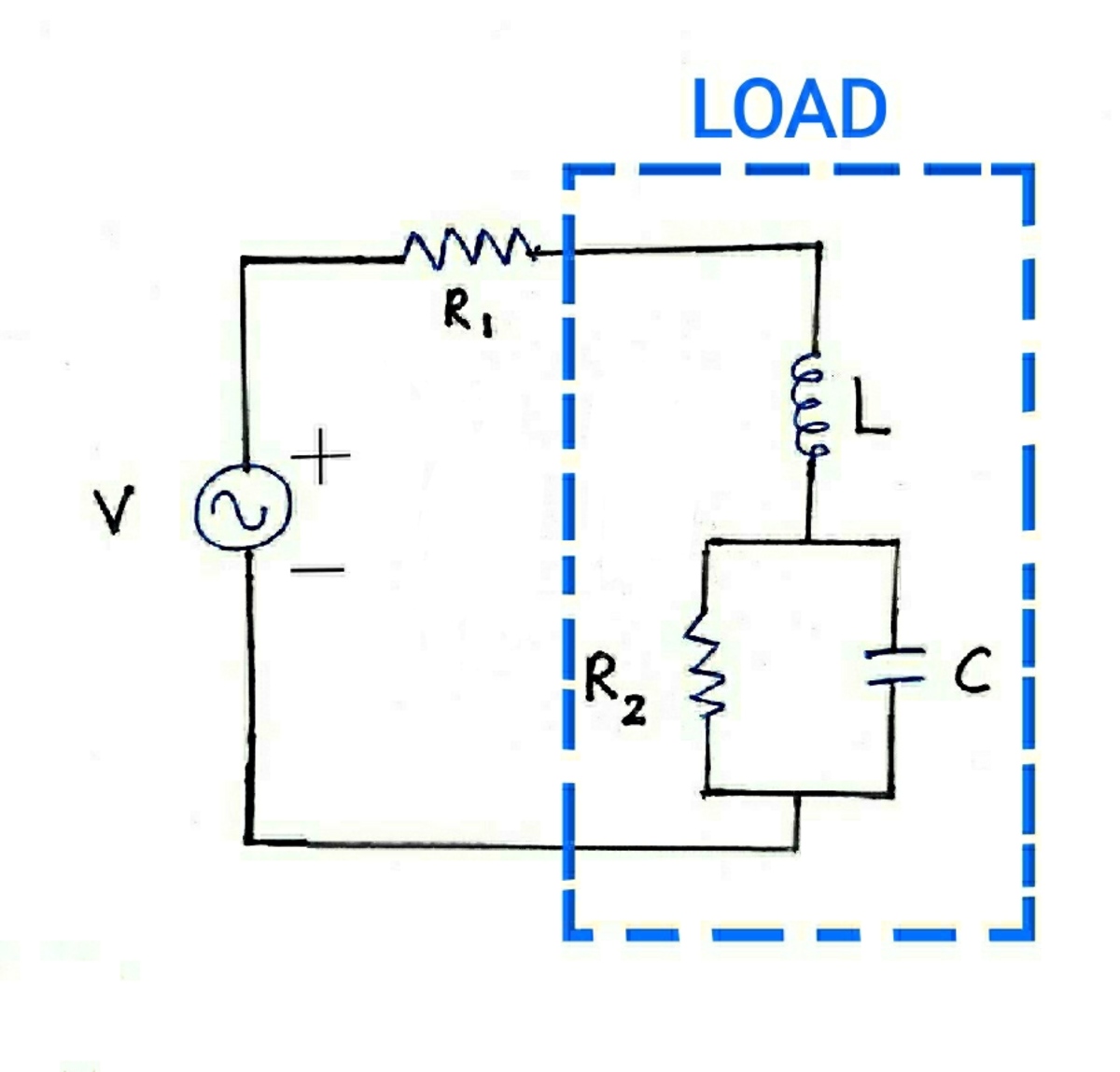Maximum Power Transfer
The value of Capacitor
required for maximum power to be transferred to the load is?

Type your answer as
Details and Assumptions
1)
2)
3)
4)
5)
Consider everything in SI units.
The problem is not original.
The answer is 10.
This section requires Javascript.
You are seeing this because something didn't load right. We suggest you, (a) try
refreshing the page, (b) enabling javascript if it is disabled on your browser and,
finally, (c)
loading the
non-javascript version of this page
. We're sorry about the hassle.
Interesting problem for the harmonic steady state! Before we begin, we normalize all currents, voltages, time and elements by the values given below: voltages: 1 V , currents: 1 A , time: 1 s ⇒ R : 1 Ω , C : 1 F , L : 1 H , P : 1 W The network equations remain the same in the process, but now all currents, voltages, time and elements represent their normalized dimensionless counterparts.
Remember in single frequency harmonic steady state, the average power consumed in a (load) impedance Z L is
In the given network, our load impedance consists of R 2 , C , L . We split it into real- and imaginary part: Z L = j ω L + R 2 ∥ j ω C 1 = j ω L + j ω R 2 C + 1 R 2 = j ω L + ∣ j ω R 2 C + 1 ∣ 2 R 2 − j ω R 2 2 C ( ∗ ) We assume both U L , I L are oriented downward. By Kirchhoff's Voltage Law (KVL) we get I L = R 1 + Z L V ⇒ P = 2 ∣ I L ∣ 2 ℜ { Z L } ( ∗ ) = 2 ∣ R 1 + Z L ∣ 2 ∣ V ∣ 2 ⋅ ∣ j ω R 2 C 2 + 1 ∣ 2 R 2 = 2 ∣ ( j ω L + R 1 ) ( j ω R 2 C + 1 ) + R 2 ∣ 2 ∣ V ∣ 2 R 2 = 2 ∣ ∣ j ω L + R 1 ∣ 2 ( j ω R 2 C + 1 ) + R 2 ( − j ω L + R 1 ) ∣ 2 ∣ V ∣ 2 R 2 ⋅ ∣ − j ω L + R 1 ∣ 2 = : 2 Q ( C ) const Only the denominator still depends on C . If we want to maximize P , we need to minimize Q ( C ) : Q ( C ) = ( ∣ j ω L + R 1 ∣ 2 ω R 2 C − ω R 2 L ) 2 + ( ∣ j ω L + R 1 ∣ 2 + R 1 R 2 ) 2 ≥ ( ∣ j ω L + R 1 ∣ 2 + R 1 R 2 ) 2 The denominator Q ( C ) can reach its minimum if (and only if) the first square vanishes. As long as ∣ j ω L + R 1 ∣ 2 ω R 2 = 0 , we get ∣ j ω L + R 1 ∣ 2 ω R 2 C − ω R 2 L = ! 0 ⇒ C = ∣ j ω L + R 1 ∣ 2 L = ∣ j 0 . 5 + 0 . 5 ∣ 2 5 ⋅ 1 0 − 3 = 1 0 − 2 , 1 0 0 0 C = 1 0